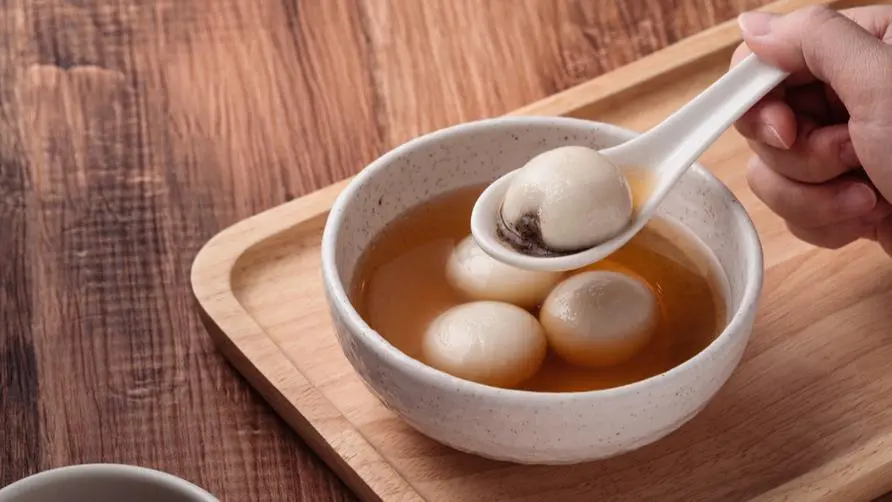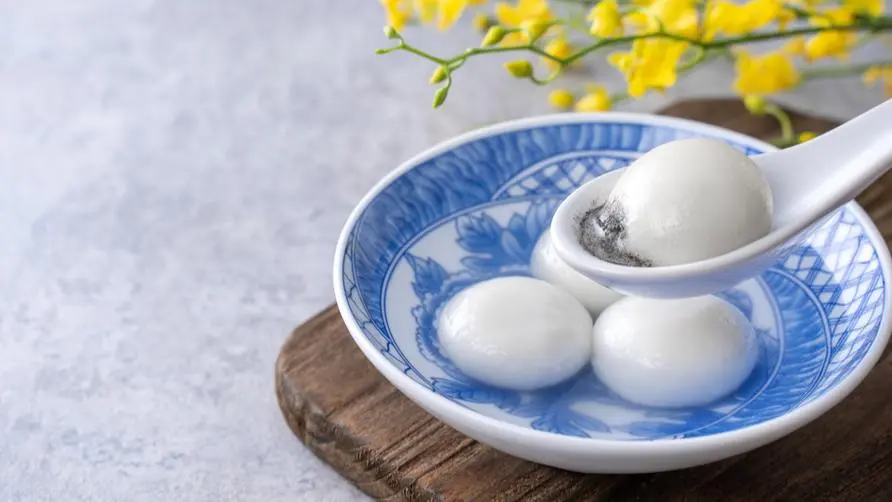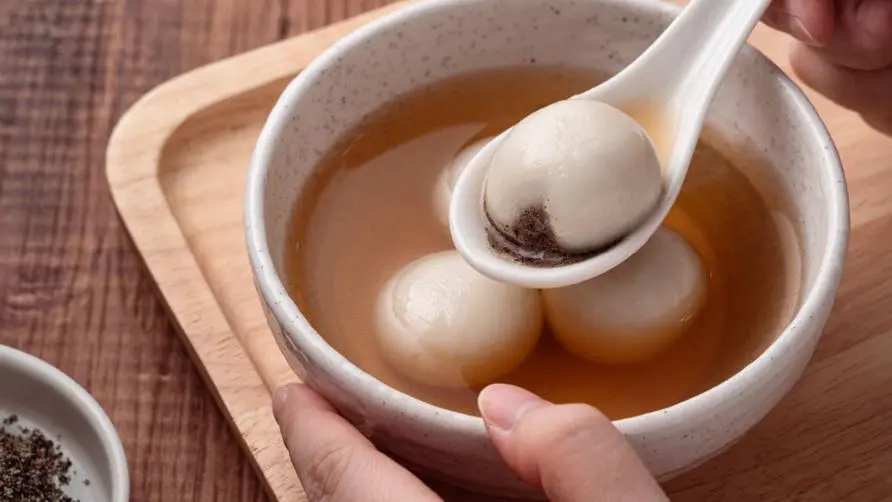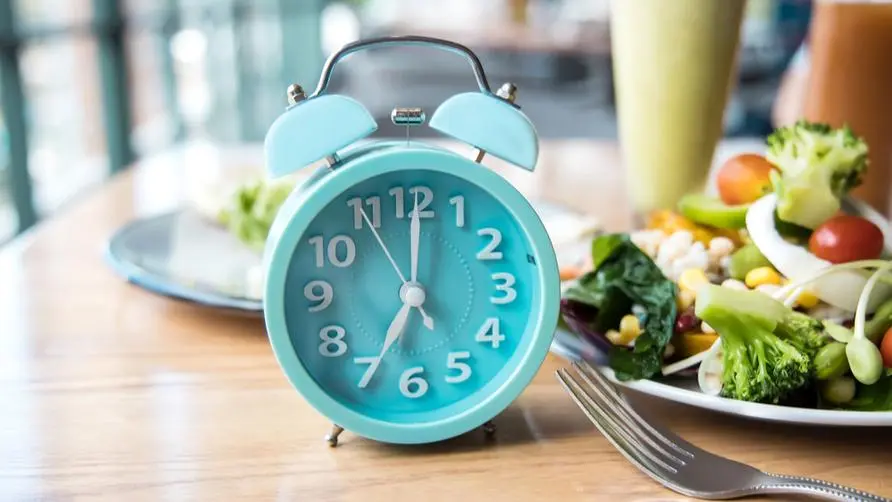Is it difficult to control blood sugar and weight after eating glutinous rice balls during the Winter Solstice? Nutritionist reveals "1 way to eat" to delay blood sugar after meals

4 pills equals 1 extra bowl of rice! Nutritionist reveals 3 big dumpling landmines
When the winter solstice comes, people will eat glutinous rice balls to celebrate the occasion. However, eating too much glutinous rice balls not only increases weight, but may also affect blood sugar and chronic disease control. A Manman nutritionist interviewed pointed out that commercially available glutinous rice balls mainly include large glutinous rice balls with fillings and small glutinous rice balls without fillings. Most of the stuffed glutinous rice balls come in two flavors: sweet and salty. The sweet stuffed glutinous rice balls that most people like to eat include sesame, peanut, milk sugar, and quicksand glutinous rice balls. One piece (20 grams) contains 70-80 calories. Eat more. 4 glutinous rice balls are equivalent to 280 calories in a bowl of white rice.
A nutritionist from Manman said that one large salty dumpling with meat filling on the market (20 grams) has about 60-70 calories. Although it has fewer calories than sweet dumplings, the meat filling inside is seasoned and contains more fat and oil. Salt and Seasoning. Groups who need to control their weight are generally not recommended to eat stuffed foods such as dumplings, soup dumplings, and salty glutinous rice balls. However, for chronic disease groups with poor vascular health and patients with abnormal kidney function, eating too much salty glutinous rice balls may lead to excessive salt and sodium, which is harmful to cardiovascular and cardiovascular diseases. Unfavorable kidney function.
In addition to paying attention to the calories when eating sweet glutinous rice dumplings, and paying attention to the sodium content when eating salty glutinous rice dumplings, there are also hidden landmines in the sweet soup that is paired with glutinous rice dumplings. Manman nutritionists remind that many people like to eat glutinous rice balls with sweet soups such as peanut soup, red bean soup, and sweet rice dumplings. These sweet soups themselves have 160-200 calories. If you want to eat sweet soup with large sweet glutinous rice balls, It is recommended not to take more than two pills at a time. As for the red and white glutinous rice balls, each one only has 6 calories. However, the red glutinous rice balls contain artificial coloring. Excessive amounts may be related to ADHD in children. Parents should pay attention to the amount of food consumed by their children.
How to eat glutinous rice balls healthily? Sugar-free black tea can be used instead of sweet soup
“Tangyuan is made of glutinous rice. Although it is not easy to digest, the glycemic index is still on the high side!” Manman nutritionist pointed out that glutinous rice contains a lot of amylopectin, which breaks down quickly in the intestines and can easily lead to post-meal blood sugar. rise. For those with diabetes or chronic diseases, it is recommended to limit intake to two pills a day and try to eat glutinous rice balls in the morning and during the day to help burn off excess calories through physical activities during the day.
Manman nutritionists suggest that eating glutinous rice balls with breakfast is a good way. You can eat an egg first to help delay the rise in blood sugar after meals through solid protein, which can help control blood sugar. If you like to eat salty glutinous rice balls, be sure to increase your vegetable intake when cooking. Fried glutinous rice balls are not recommended at all.
In addition, you can use sugar-free hot black tea or green tea, or soy milk, tofu pudding to replace sweet soups such as red bean soup and peanut soup. White fungus soup contains dietary fiber, which can slow down the absorption of sugar. It is also a healthy choice suitable for pairing with glutinous rice balls. As for the red and white dumplings without fillings, it is recommended to eat them with eight-treasure porridge to increase the intake of whole grains such as pinto beans and barley to help balance nutrition.
Beware of gastroesophageal reflux if you eat too much glutinous rice. Eat a full meal to avoid loss of appetite.
Manman nutritionists remind that digesting glutinous rice can easily cause flatulence. If your body type is prone to flatulence, or you have gastroesophageal reflux problems, it is not recommended to eat too many glutinous rice products. If people with diabetes want to eat glutinous rice balls, it is recommended to eat them with meals and avoid eating them between meals. Firstly, they can reduce excess calories by replacing staple foods with meals, and secondly, they can reduce blood sugar fluctuations throughout the day.
“When blood sugar goes up and down, it is easy to feel hungry when blood sugar drops, and to have the urge to eat between meals, so you must eat a full meal!”
Manman nutritionists suggest that many people increase their appetite when the weather is cold, especially those who need weight management. They should avoid eating more snacks, biscuits and other high-calorie foods due to insufficient nutritional intake at meals. When eating glutinous rice balls during the Winter Solstice, it is recommended to only taste them briefly. If you include glutinous rice balls in this meal, remember to reduce the amount of starch in staple foods such as noodles, rice, and porridge. While enjoying delicious food, you should take into account your blood sugar and weight health.
Further reading:





